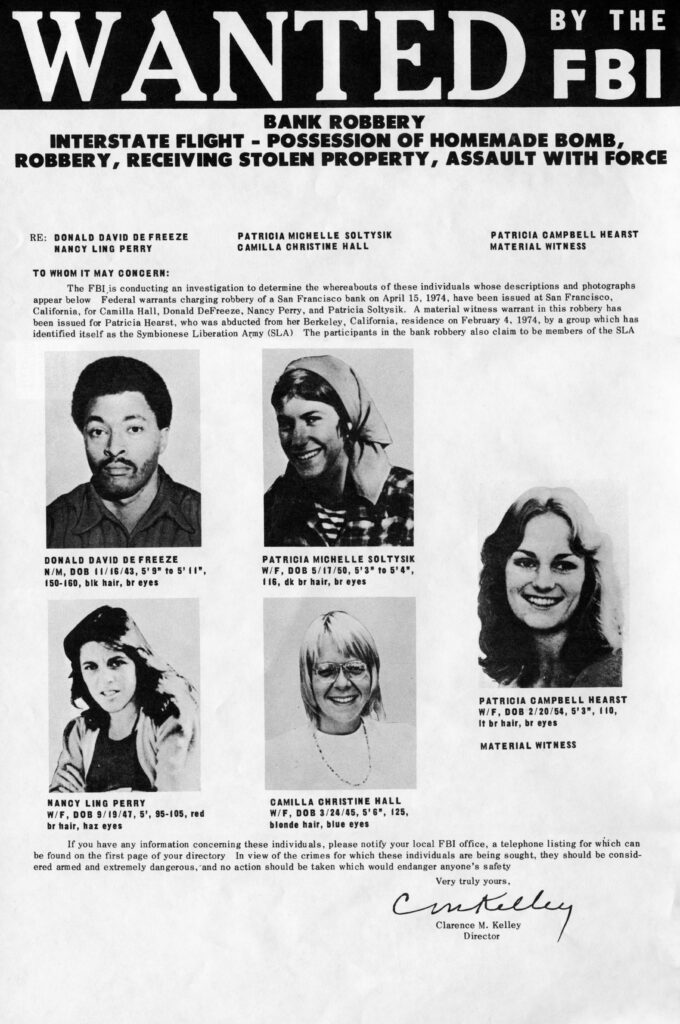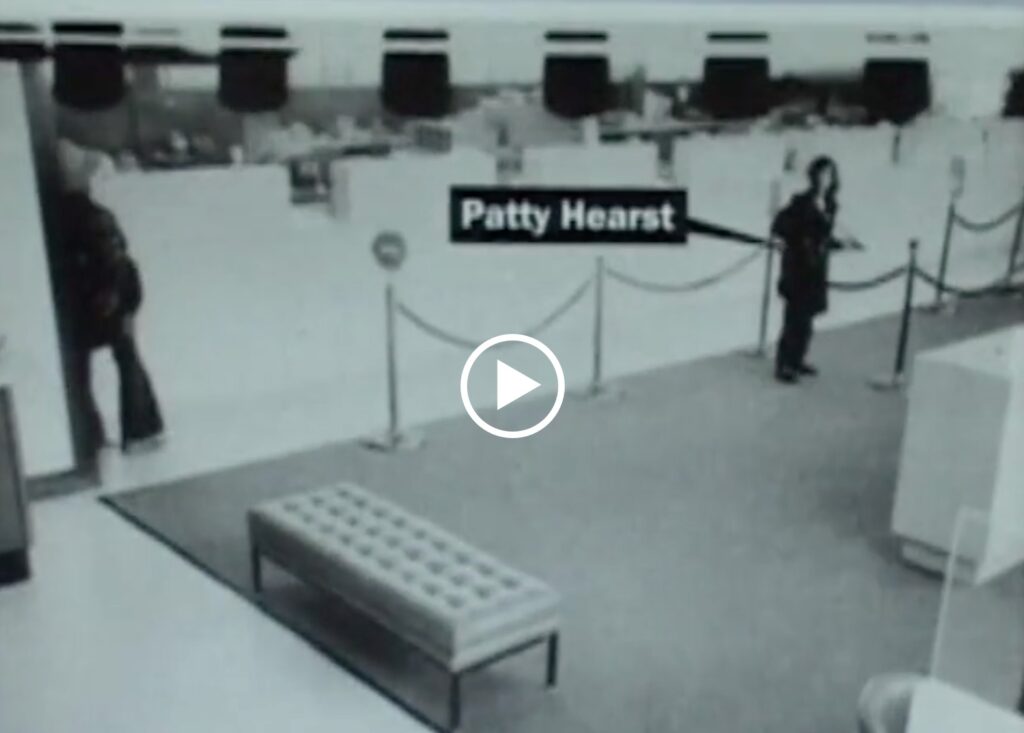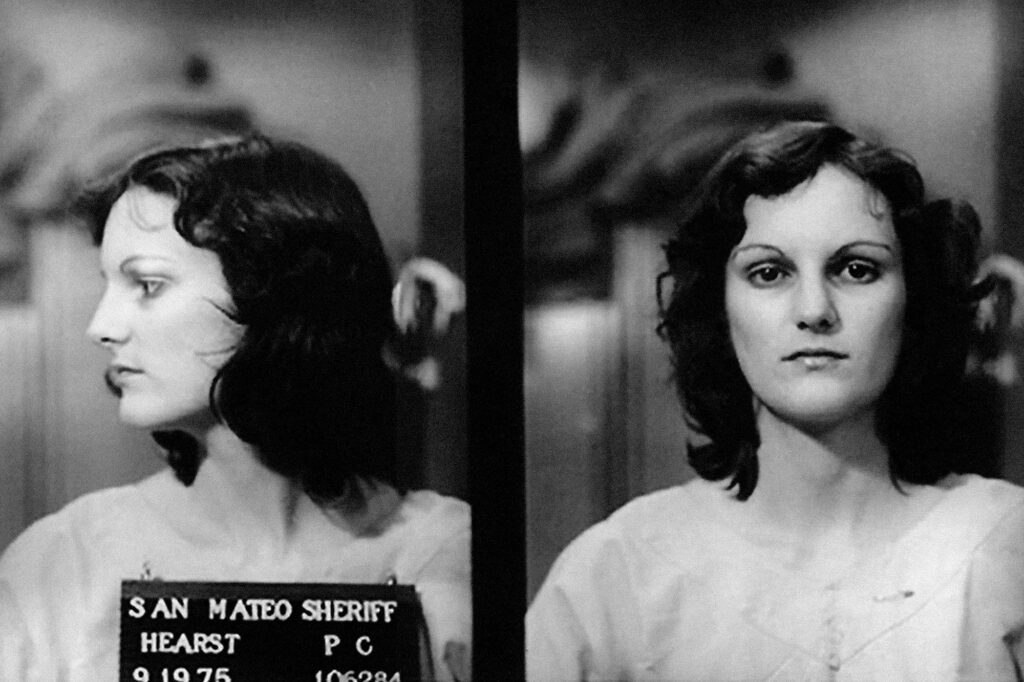Fifty years after the sensational kidnapping of newspaper heiress Patty Hearst shocked the nation, questions still linger about her transformation from victim to revolutionary.
On February 4, 1974, a knock on the door of Hearst’s Berkeley, California apartment changed her life forever when members of the radical Symbionese Liberation Army (SLA) abducted the 19-year-old granddaughter of media baron William Randolph Hearst.
From Heiress to Revolutionary
After enduring two months in captivity, Hearst stunned the world by denouncing her wealthy family and declaring her allegiance to her kidnappers, adopting the guerrilla name “Tania.” Her apparent conversion deepened when she was caught on camera wielding an assault rifle during an SLA bank robbery. The image of the young heiress as an urban guerrilla cemented her status as a notorious cultural icon of the 1970s.
Hearst’s Unlikely Path to Radicalization
In an interview with me for the True Crime Reporter® podcast, journalist Roger Rapoport, author of the book “Searching for Patty Hearst,” shared insights from his extensive research and interviews. He described Hearst as an unlikely revolutionary, a sheltered college student who had largely avoided the radical politics swirling through Berkeley at the time.
“She crossed the United Farmworkers’ picket lines,” Rapoport noted. “She thought her father’s attempt to help the Latino community in the San Francisco area was kind of a joke.”
Yet just months later, Hearst supported the SLA leader who referred to her family as “pig Hearsts” in ransom demands, and she later called for the overthrow of the capitalist system in audio communiqués delivered to the media.
The Motives and Tactics of the SLA
The SLA, founded by escaped convict Donald DeFreeze, was a small but heavily armed cult-like group with a penchant for cyanide-tipped bullets and grandiose Marxist rhetoric. They saw in Patty Hearst a means to bring attention to their cause and secure a multimillion-dollar ransom from her wealthy family.
But the Hearst family refused to pay on the advice of authorities. As Rapoport told me, Randolph Hearst quietly tried to negotiate his daughter’s release through back channels with imprisoned SLA members but to no avail. The family’s inaction left Patty feeling abandoned and cemented her loyalty to the SLA.
Hearst as Revolutionary Mouthpiece

The heiress proved a powerful mouthpiece for the group, unleashing articulate condemnations of the “pig power structure” that captivated a global audience. Rapoport said even the SLA was taken aback by the vehemence of her communiqués and urged her to tone down her rhetoric for fear of not being believed.
“The FBI launched a massive manhunt to find Hearst and her captors, who funded their revolutionary aims through a series of bank robberies and bombings,” Rapoport explained.
When two of her kidnappers were caught shoplifting at a sporting goods store, Hearst jumped out of their getaway van and sprayed the store with machine gun fire. They later abandoned the van, which was recovered by police. An outstanding parking ticket led a SWAT team to the SLA’s hideout in south central Los Angeles.
Tragedy and Capture
The Hearst saga took a tragic turn in May 1974 when the LAPD surrounded the SLA’s hideout. A televised shootout in which police exchanged nine thousand rounds attracted ten thousand bystanders held back by four hundred police officers. A tear gas round ignited the house, and fire left six SLA members dead, but Hearst was not among them. Instead, she went on the run with the remnants of the SLA for more than a year before the FBI finally captured her in September 1975.
After a year on the run, the FBI found Hearst by meticulously checking hundreds of new hookups to electrical service.
The Trial and Aftermath
At her trial, Hearst claimed she had been brainwashed, raped, and coerced into participating in the SLA’s crimes. But jail cell recordings of her cursing and voluntarily boasting of her exploits sank her defense. Jurors found her guilty of bank robbery. She served two years in prison before President Jimmy Carter commuted her seven-year sentence. Decades later, President Bill Clinton granted her a full pardon.
An Enduring Mystery
The question of whether Hearst was a brainwashed victim or a willing revolutionary has fueled debate for half a century. At 70, the former heiress has rebuilt her life and public image, finding a redemptive passion in raising prize-winning show dogs. But the mystery of her lost 19 months as “Tania” still endures.
Rapoport hopes his book will inspire readers to explore the case with an open and critical mind. “I want people to not just take any one person’s word, not just for this case, but any case, and do their homework,” he said. “Because I think that’s how you need to approach the world.”
New Details Emerge
During his book tour, Rapoport says new witnesses have come forward with fresh details about the Hearst abduction and the inner workings of the SLA. One woman described being recruited to join the SLA at a meeting in Berkeley that was “unbelievably scary” with “weapons everywhere.”
“They would mask people, take them to secret meetings, and so on,” Rapoport recounted. “They were struggling to find the right new membership.”
As the 50th anniversary of the kidnapping renews interest in the case, Rapoport believes it continues to resonate because of its peculiar blend of wealth, privilege, radical politics, and violence.
An American Tragedy
“This is really, in some ways, an American tragedy,” he reflected. You have one of the wealthiest families in the country’s history. You have a grandfather who was a major force in the Spanish-American War and built this castle in San Simeon and a father who’s a business executive and philanthropist. You have a young woman who seemingly had everything and wanted something more. And the country was in a very turbulent time.”
Hearst herself has long maintained that she was a victim, brainwashed and coerced into her role as an unlikely revolutionary. Whether she experienced a genuine political awakening or a textbook case of Stockholm syndrome remains an open question.
A Story for the Ages
But the enduring fascination with her story speaks to its potent mix of true crime, radical politics, and the unraveling of a charmed life. The saga of Patty Hearst, the heiress turned “Tania,” continues to captivate the public imagination half a century later, a haunting chapter in the turbulent history of 1970s America.
FOLLOW the True Crime Reporter® Podcast
SIGN UP FOR my True Crime Newsletter
TELL ME about a STORY OR SUBJECT that you want to hear more about



